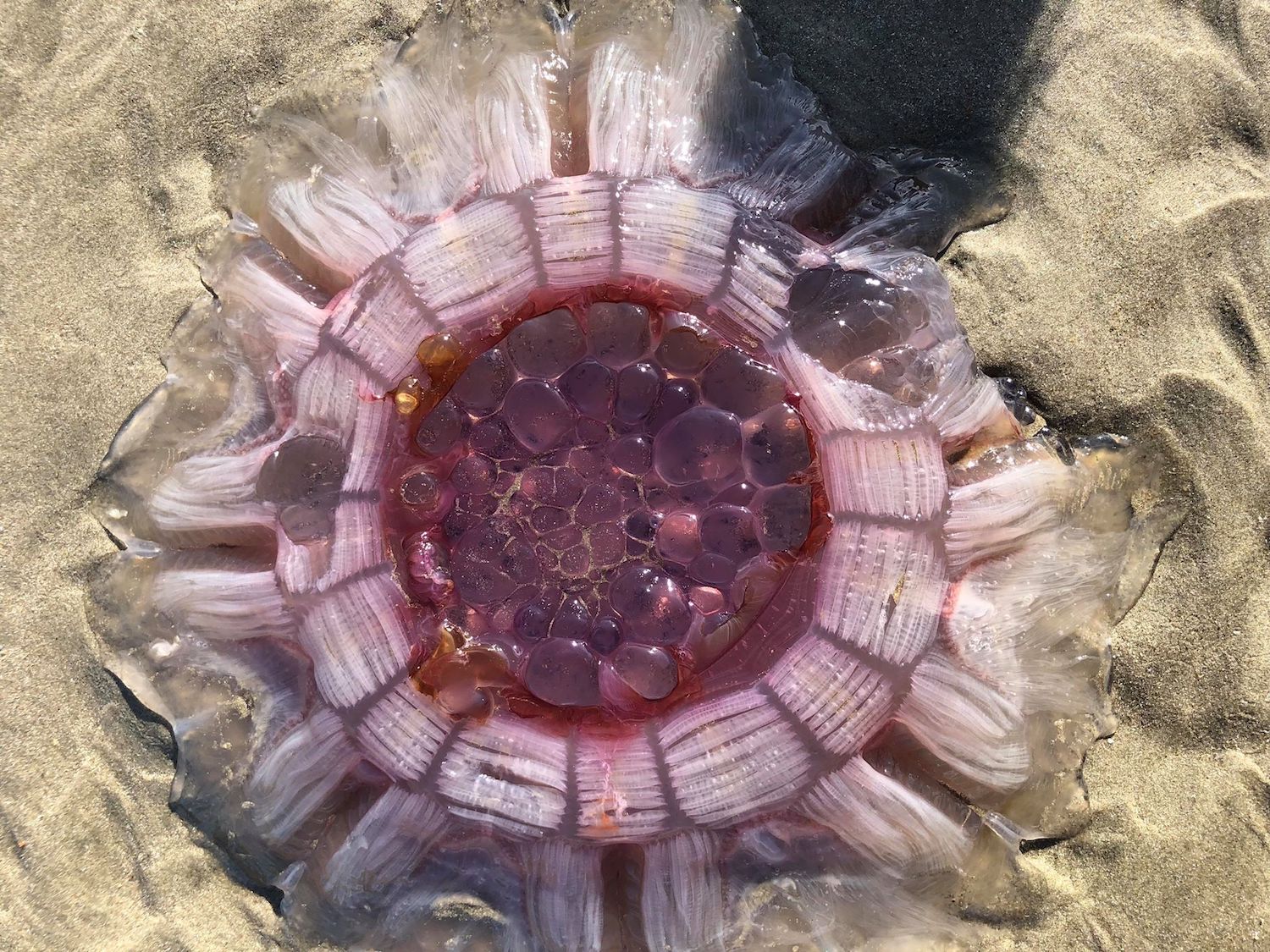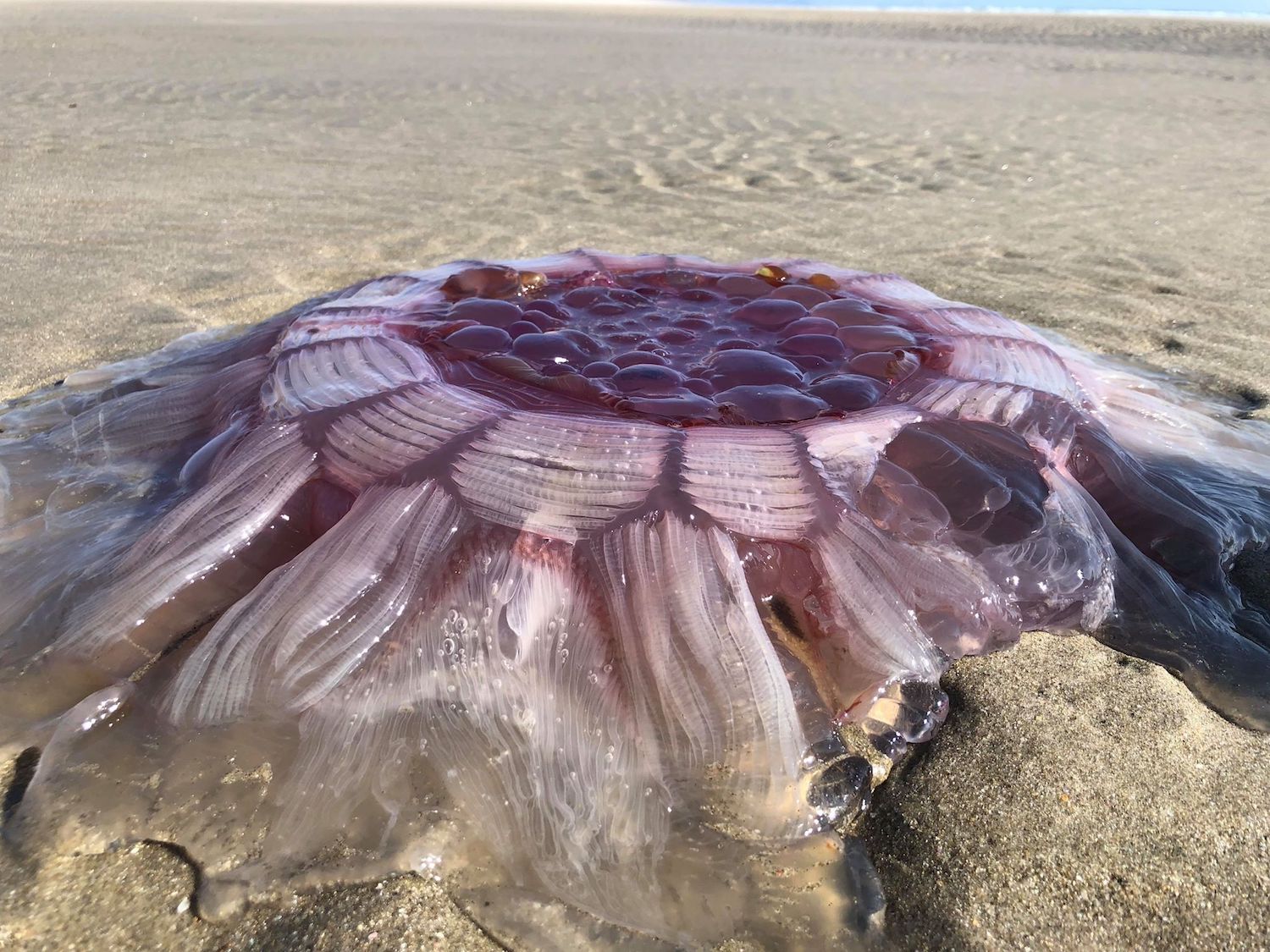Family Finds Gooey 'Alien' Jellyfish on NZ Beach. And It Looks Like a Jell-O Mold.

A family on New Zealand's North Island were enjoying an early morning walk on Pakiri Beach last week when they came across a monstrous, gooey blob with a gelatinous grape-colored center. Although it resembled a tossed-out Jell-O mold, it wasn't for eating — the glob was an enormous lion's mane jellyfish (Cyanea capillata).
Eve Dickinson and her family had seen several jellyfish on the beach that morning, and they were pretty amazed, she told Auckland Now.
"Then we saw this massive one that seemed different from all of the others," Dickinson said. "It was incredible." [Image Gallery: Jellyfish Rule!]
Lion's mane are the largest species of jellyfish, with a bell that can grow up to 7 feet (2.1 meters) across and a thick mop of hair-like tentacles that reach nearly 120 feet (36.6 meters) long, according to Oceana, a nonprofit ocean research and conservation organization. They're much more recognizable in the water, where they gracefully drift with the currents.
These globular invertebrates spend most of their time offshore, floating around in the open ocean. But they're common in waters around New Zealand during the summer, Diana Macpherson, a marine biologist at the National Institute of Water and Atmospheric Research in New Zealand, told Auckland Now.

Similar to most other species of jellyfish, the lion's mane use their powerful stinging tentacles to stun and capture prey. The tentacles' stinging cells, called nematocysts, eject poison when they come into contact with small fish, crustaceans or other jellyfish. Fortunately, lion's mane aren't deadly to humans, although a sting from their tentacles is likely to be a bit painful.
Lion's mane jellyfish typically exhibit dark yellow or red coloration in the center of the bell, but the one the Dickinsons found stood out for its vibrant dark red-purple center.
Sign up for the Live Science daily newsletter now
Get the world’s most fascinating discoveries delivered straight to your inbox.
"We spent ages looking at it because of its beautiful colors and shape," Dickinson told Auckland Now. "My boy said it reminded him of a volcano."
Original article on Live Science.

Kimberly has a bachelor's degree in marine biology from Texas A&M University, a master's degree in biology from Southeastern Louisiana University and a graduate certificate in science communication from the University of California, Santa Cruz. She is a former reference editor for Live Science and Space.com. Her work has appeared in Inside Science, News from Science, the San Jose Mercury and others. Her favorite stories include those about animals and obscurities. A Texas native, Kim now lives in a California redwood forest.










